GRG News for 2012
"Profs. Stephen Coles, S. Jay Olshansky, and Leonard Hayflick Attend GSA Conference"
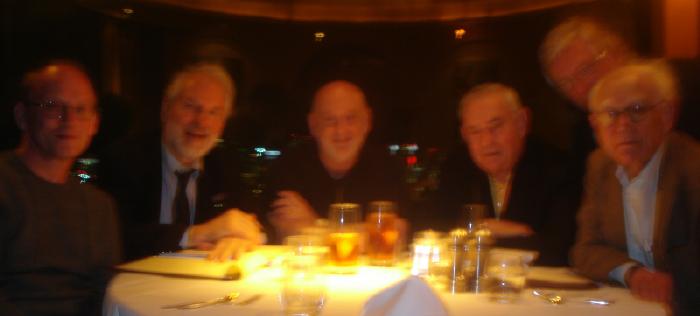
Saturday, November 17, 2012; 7:30 PM PDT; Profs. L. Stephen Coles, S. Jay Olshansky,
Leonard Hayflick, Bruce Carnes, David Staats, M.D. (Geriatrician), and Jacob Seagle
(Demographer and Author of a standard text on actuarial sciences) met for dinner to discuss
future funding of basic research in gerontology in connection with the 65th Annual GSA meeting
in San Diego, CA.
"Prof. Leonard Hayflick Keynotes AMMG Conference"
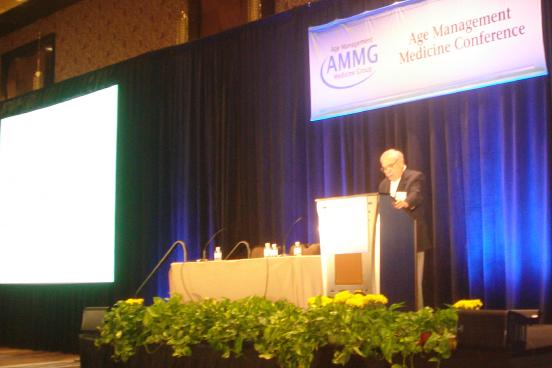
Friday, November 2, 2012; 8:30 AM PDT; Prof. Leonard Hayflick, my instructor in Medical
Microbiology at Stanford University in 1974 (38 years ago), is acknowledged to be one of the top
ten gerontologists in the world today for his discovery of what we now call "The Hayflick Limit"
(the limit on the number of replications of fibroblasts as a function of minimum telomere length
was shown to be 50 +/-10). I invited him to present as our Keynote Speaker at a four-day
AMMG Conference in Las Vegas, NV at the Cosmopolitan Hotel. - - Stephen Coles
"The Biology of Aging Is Now Understood"
Abstract:
The belief that aging is still an unsolved problem in biology is no longer true. To
understand this belief, it is necessary to define the four phenomena that characterize the
finitude of life : (1) aging; (2) the determinants of longevity; (3) age-associated diseases; and
finally (4) death. Age changes can occur in only two fundamental ways: Either (1) as the result
of a purposeful program driven by our genes or (2) by stochastic (random) accidental molecular
events.
The weight of evidence indicates that a gene-driven program does not govern the aging
process; it is the stochastic or random loss of molecular fidelity that does. Potential longevity is
determined by the energetics of molecules present after reproductive maturation, including those
that compose the repair machinery involved in turnover, synthesis, and maintenance. The repair
and synthesis processes that exceed the appearance of dysfunctional molecules prior to
reproductive maturity then shifts so the spread of energy described in The Second Law of
Thermodynamics [entropy] that creates an excess of dysfunctional molecules, begins to exceed
repair capacity and the thermodynamic instability characteristic of the aging process begins. The
maintenance, repair, and synthetic pathways that maintain the fidelity of molecules produced
before and after reproductive maturity determine longevity. Unlike the stochastically-driven
aging process, longevity determination is governed by the human genome. Furthermore, the
aging process is fundamentally distinct from age-associated diseases.
Unlike diseases, age changes occur (a) in every multi-cellular animal that reaches a fixed
size in adulthood; (b) and cross virtually all species barriers; (c) in all members of a species only
after the age of reproductive maturation; (d) in all animals removed from the wild and protected
by humans even when that species probably has not experienced "aging" for thousands or even
millions of years; (e) in virtually all animate and inanimate matter; and (f) with the same
universal molecular etiology -- that is, thermodynamic instability. Unlike aging, there is no
disease or pathology that shares all six properties. Because this critical distinction is rarely
understood, the enormous imbalance of resources spent more on studying age-associated disease
than conducting research on the fundamental biology of aging cannot be expected to increase our
knowledge of the aging process.
He also mentioned privately that "Studying the longevity of lab mice is like studying
creatures from Mars! Studying highly inbred lab mice as opposed to wild-type mice doesn't tell
us very much about the fundamental basis for natural aging."
"Chinese Government Delegation Visits UCLA"

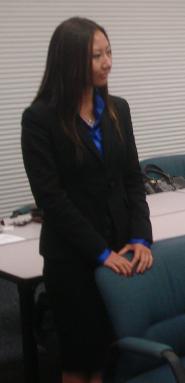


October 31, 2012; Associate Prof. Fu Wei of Bejing and Rong Li, Deputy Director General of the
National Population and Family Planning Commission of the People's Republic of China hosted
a delegation of 30 persons visiting UCLA as part of a tour of the USA. Dr. Coles presented the
latest statistics on extreme world wide longevity. Ms. Ivy Xiao of UCLA served as a translator
for the group.
"Healthy Aging: Taking Control of Your Life
Seminar"

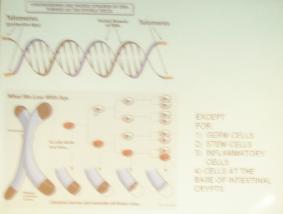
Saturday, October 27, 2012; [10:00 AM - 4:30 PM] - - The UCLA Longevity Center (Prof. Gary
Small, M.D., Director) presented a one-day seminar at The Olympic Collection in West Los
Angeles. Keynote speaker Prof. David Heber, M.D., Ph.D., FACP, FACN and Director of the
Center for Human Nutrition spoke on "Nutritious Eating and an Active Lifestyle for Healthy
Aging." The second slide demonstrates the concept of telomere erosion and the Hayflick
Limit.
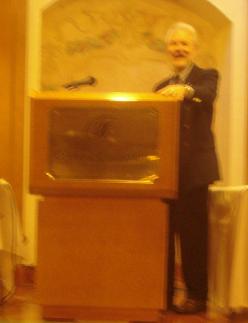
Profs. L.
Stephen Coles (UCLA) and Howard Friedman (UC Riverside) then hosted a session on "The
Centenarians - - Life Past the Century Mark: A Look at the Art and Science of Living Past 100
and the Characteristics of Centenarians."
"Douglas C. Wallace Seminar at UCLA"
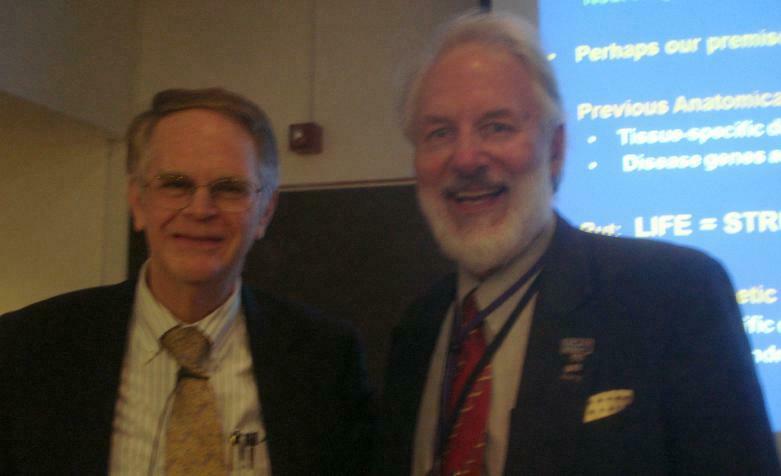
Thursday, October 25, 2012; Prof. Douglas C. Wallace, Ph.D. of the Center for Mitochondrial
and Epigenomic Medicine of the Children's Hospital of Philadelphia Research Institute in
Pennsylvania presented a 4:00 PM Molecular Biology Institute Seminar on the topic of "A
Mitochondrial Etiology of Complex Diseases: Verification Through Mouse Models."
"Professor Richard Dawkins of Oxford Gives Noon
IMED Seminar at UCLA"
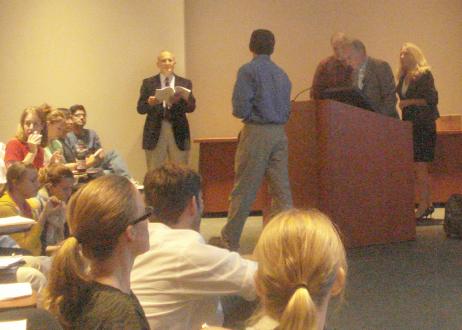
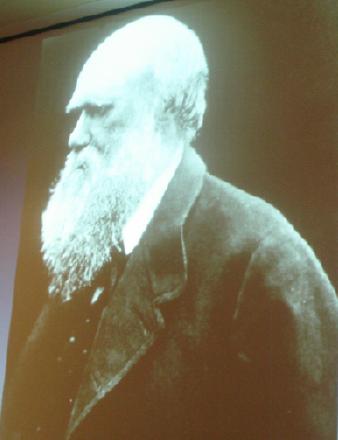
Tuesday, October 9, 2012; Prof. Richard Dawkins of Oxford presented a Noon IMED Seminar at
the UCLA David Geffen School of Medicine to a packed NRB Auditorium on the topic of
"Darwin's Five Bridges." This was one of Dawkin's best lectures ever and the challenging Q&A
afterward by a few adversaries was handled in a masterful fashion. Click on his photo to watch
his lecture on the Internet.
"2012 Nobel Prize in Physiology or Medicine"
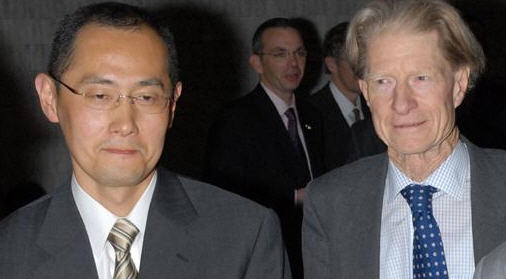
Monday, October 8, 2012; Profs. John B. Gurdon of the UK and Shinya Yamanaka of JAPAN
shared this year's Nobel Prize in Physiology or Medicine for their work in so-called Cellular
Reprogramming, which has unleashed a wave of advances in everything from cloning to the
possible treatment of diseases using stem cells.
Refs.:
1. Gautam Naik, "Stem-Cell Scientists Win Nobel Prize," The Wall Street Journal, pp.
A1,2 (October 8, 2012).
2. Eryn Brown and Jon Bardin, "Nobel Prize Honors Two Stem-Cell Research Stars: An Old
Hand from Britain (79) and a Younger Japanese Scientist (50) Profoundly Altered Beliefs about
Biology," The Los Angeles Times, pp. A1,8 (October 9, 2012).
3. Nicholas Wade,
"Cloning and Stem Cell Work Earns Nobel," The New York Times, pp. A1,9 (October
9, 2012).
4. "Gurdon Gets an 'F' in Science in Grade School with Instructions Not To Waste His Time,"
CNN Anderson Cooper 360 (October 9, 2012; 5:58 PM PDT; TRT=2 min.)
"LA Chapter Physicians for Social Responsibility
September Gala"
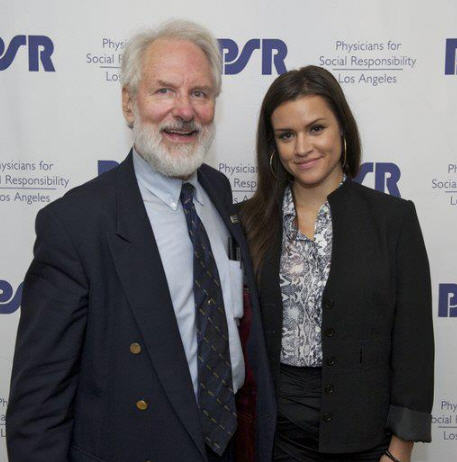
Sunday,
September 9, 2012; [6:30 - 10:30] PM; PSR-LA Board Member L. Stephen Coles M.D., Ph.D.
and Natalie Coles at thye September Gala at the Beverly Wilshire Four Seasons Hotel.
"Longevity 8 International Conference in Toronto"
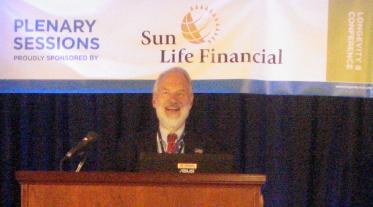

Friday, September 7, 2012; 8:30 AM EDT; Dr. Coles was invited to present the keynote address
"Secrets of the Oldest Old" to the Longevity 8, the Eighth International Longevity Risk
and Capital Markets Solutions Conference in Waterloo, Ontario, CANADA, to 160 attendees
from 16 counties. The Conference and sponsored by the world-wide insurance and pensions
industry. Click on the second photo of the Panel Discussion for more details.
"Book Signing at 40th Annual Cancer Convention"

Saturday, September 1, 2012; [1:00 - 5:30] PM; Sheraton Universal Hotel in Hollywood, FL Dr.
Coles does a book signing at the 40th Annual Cancer Convention.
"Oldest Male Panda Dies in Berlin Zoo"

August 21, 2012;
Bao Bao, the oldest known male panda died in Berlin at the age of 34 yo. Click on his photo for
more details.
"20-Hour UCLA Course on Human Longevity and
Successful Aging"
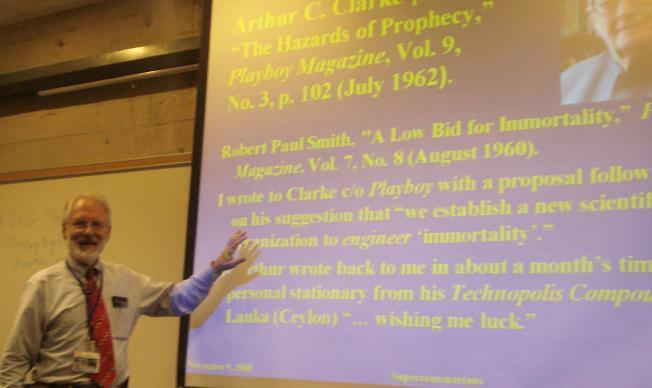
Friday,
August 10, 2012; 10:00 AM PDT; Classroom 320; 1010 Wilshire Blvd. in Westwood, CA; Dr.
Coles completes a 20-hour course on "Successful Aging for the Individual and for Society" with
the Osher Lifelong Learning Institute (OLLI) of the UCLA Extension Program for 22 adult
students.
"Immunology of Aging"

Wednesday, August 8, 2012; 7:30 PM; Prof. Doron Melamed, Ph.D., an immunologist at the
Technion in Haifa, ISRAEL [the Israeli equivalent of MIT and CalTech combined with the
exception that there is a medical school across the street {Rambam Hospital}] who lectured in
Beverly Hills at the home of Joan and Arnold Seidel for the American Technion Society, spoke
on "Turning Back the Clock: An Approach to Reversing the Aging Process." Melamed's Lab has
proven the hypothesis that the increasing immune incompetence with age and the decline in
B-Cell Lymphocyte numbers (the cells that synthesize antibodies) is not due to the capability to
synthesize new B-Cells in the bone marrow compartment (in the peripheral blood, these cells last
only about two weeks before being replenished), but due to the increase in the numbers of
"Memory Cells" (which last for decades and are the cells that are created after immunizations, for
example, to give one permanent immunity to certain disease-causing microbes). Memory Cells
provide transcription factors that serve as a negative feedback loop on the production of fresh
B-Cells. If the large numbers of Memory Cells that increases with exposure to more and more
antigens over a lifetime could be cleared out then maybe the machinery to create more B-cells
could be turned back on. This is exactly what happened in a group of tens of mice that
Melamed's Lab tested using a drug called Rituxan. Unfortunately, a full life-history experiment
was not performed to verify that the experimental mice lived statistically-significantly longer
than controls due to cost considerations. Rituxan is a chemotherapy drug (that is administered by
IV in a hospital or clinic once a week for a period of [4 - 6] weeks frequently in combination with
methotrexate) that is indicated to treat Non-Hodgkin's Lymphoma. Melamed is working with
hematology oncologists to test the immune function of patients with lympoma who are taking
Rituxan already to identify the Transcription and Complement Factors that control the synthesis
of fresh B Cells. This work serves as a proof of concept for future research.
"Wired Photo Shoot"
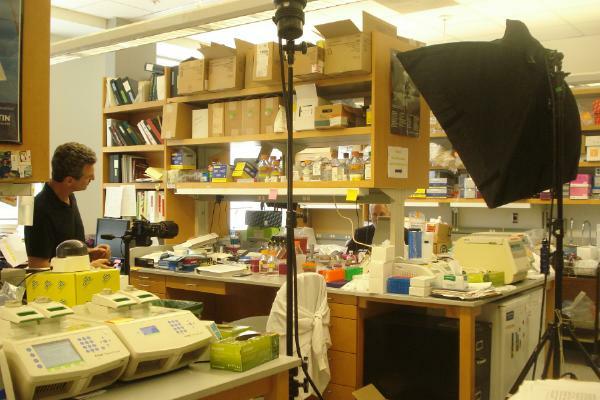
Monday, August 6, 2012; 1:30 PM; Professional Photographer, Mr. Gregg Segal of Altadena, CA
under contract to Wired Magazine, shot 218 digital camera portrait photos in three
hours at the UCLA Lab of Drs. Eric Vilane, M.D., Ph.D. and Ruth Baxter, Ph.D. of Stephen
Coles for a story on aging research. The story is expected to appear in the October issue of
Wired.
"Where is Heaven Located?"
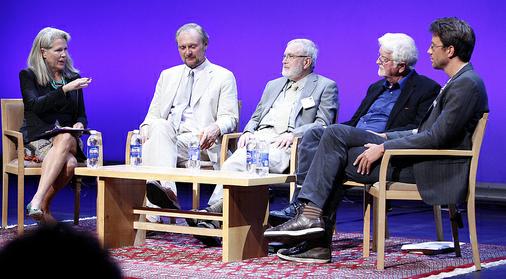
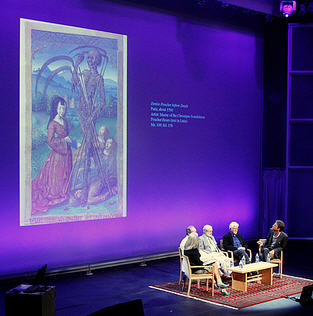
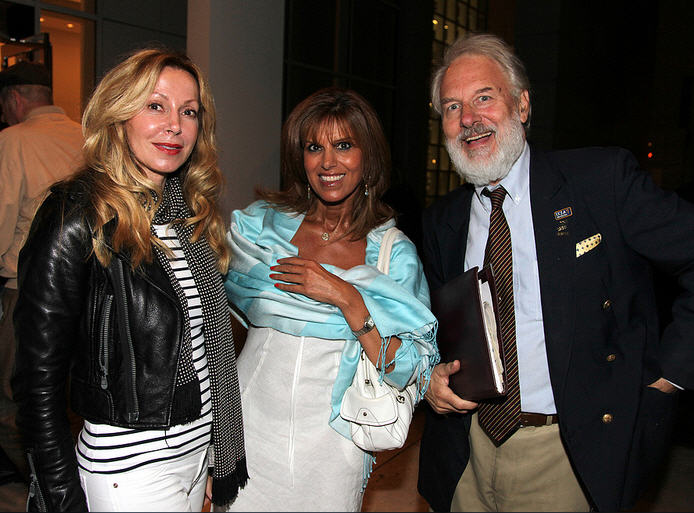
Monday, July 26, 2012; [7:30 - 9:30] PM; Los Angeles, CA; The Getty Center Museum and
Zocalo Public Square presented a Distinguished Panel discussing the topic "What Does Heaven
Look Like?" to an audience of over 200 visitors in the Harld M. Williams Auditorium.
The Takeaway: Heaven's Nice, But Hell's More Fun To Paint!
Human depiction
of the afterlife is as varied as our diverse cultures.
Where's heaven? What's it like? Who gets in? And what tortures await those of us who land in
the alternative destination?
It was revealed that there are at least two heavens: (1) a "Celestial" Heaven which lies
somewhere high up in the sky (over the rainbow); and (2) a "Terrestrial" Heaven that corresponds
to the "Garden of Eden," as described in Genesis, assuming that you can find it (BTW,
the East Gate of the Garden is guarded by an Archangel with a "flashing and flaming sword" (so,
a heavy-duty angel, not a Cupid with tiny wings) to ensure that no mortal human(s) reenter after
we were expelled for our "original sin" (eating from the "Tree of Knowledge" when we explicitly
prohibited from doing so) as we were tempted by the serpent and lest we eat from the second tree
- - the "Tree of Life" - - and become like us {immortal?} [the only occasion in the Bible, to
my knowledge, that God speaks of Himself as a "plural" entity {leading us to conclude that
Heaven may be populated by a pantheistic "tribe of gods" who preexisted the creation of Adam
and Eve. If you're looking for a plot for a new Bible story, here it is! Wait - - Wasn't this written
down by Egyptians, Greeks, and Romans, as something that we now call mythology, but which
for them was the real thing?}]).
Since your spirit (soul), which presumably leaves the mortal body at the time of
your death, and your body which decays almost immediately with the onset of death
(which must be rendered as youthful and "perfect") are to be reunited (integrated) in Heaven
(assuming you're deemed worthy and admitted by Saint Peter to pass through the "pearly gates")
in order for you to "be with God," this would present a paradox of sorts, depending on how you
died. For example, if you were eaten by a pack of wolves as the "cause of your demise" then the
wolves would have to regurgitate your body parts before assimilating them into their wolf bodies
so that these parts could be properly reassembled and magically transformed into a youthful
form. Could you fine tune this scenario further, as you ostensibly meet with all of your long lost
relatives who predeceased you back to the time of Adam and Eve, whom you haven't seen in a
while but can now fill in on what you and they have been doing since you last saw each other on
Earth, even if you weren't born before they died so you never intersected in time? BTW, is there
a divine news service to track the activities of our heavenly hosts and the hierarchy of angels who
live there in harmonious bliss, so that we can be brought quickly up-to-date upon our arrival into
the next life?
Also, where will the 40 virgins be found to fulfill the promise made to male Islamic suicide
bombers when they martyred themselves with an explosion to kill the non-believers with a
guaranteed ticket to "Paradise." What if there are not enough virgins in Heaven to go around?
Maybe their Islamic Heaven is in a different place and the virgins in question were never real
women on the Earth.
This leads to another paradox of sorts... If the conditions for admission require that you have
been baptized as a Catholic and have had a ritual of Last Rights administered by a priest before
you die, what about the innocent babies who were born but died of a disease before they could be
baptized. At one time it was assumed that they resided in "limbo," anther location between
Heaven and Hell that awaited Jesus to determine their disposition at the end of time (whenever
that would be). Jesus has dominion over a great many things (as explained in Revelation
, the last book of the New Testament).
"Purgatory" is another concept that requires some fine tuning. The panel's conclusion was that
the concept of Heaven (and Hell) is a fuzzy, slippery slope that can lead you down any direction
you chose.
Here are some more details...
Scholars of religion, history, and art asked these questions during a panel discussion at the Getty
Museum, in which they explored the ways different societies have imagined and depicted the
afterlife and what the images we create of Heaven and Hell say about life on Earth.
Producer and documentary filmmaker Jody Hassett Sanchez opened the conversation by asking
UCLA Buddhism expert Robert Buswell where, according to the Buddha, the heavens are
located.
"There are many different heavens in the Buddhist system," said Buswell as many as 27. But they
don't have a geography: the heavens are a level of rebirth, like existence as a human being or an
animal. In fact, going to heaven is "kind of a consolation prize" for Buddhists. The real goal is to
experience nirvana, which can't be located, measured, desired, or experienced.
In medieval Christianity, heaven is above, while hell is below. There's an opposition between
going up and going down, said Martin Schwarz, the curator of the Getty exhibition "Heaven,
Hell, and Dying Well: Images of Death in the Middle Ages." And while hell is usually depicted
with a lot of detail in medieval art, heaven is shown with much less specificity it's not in one
particular place.
On the other hand, for Native American tribes of the West, heaven was something very
literal, said UCLA anthropologist Peter Nabokov. In Pueblo Indian society, there is no idea of
sin, so everyone gets into heaven. A picture of heaven he found contains a certain number of
trees, a pile of dead rabbits for an imminent feast as well as corn being harvested. In heaven, your
ancestors are also waiting for you.
Quoting Belinda Carlisle "Heaven Is a Place on Earth" Hassett Sanchez asked UC Santa Barbara
religion historian Jeffrey Burton Russell about whether Heaven and Earth ever come together in
the Judeo-Christian tradition.
"Heaven is where God is," said Burton Russell. The location is beyond space and time, however.
Up until the 1600's or 1700's, Christians believed quite literally that you traveled up to Heaven
via a ladder or stairs, or circles as in Dante's Divine Comedy. And even though Dante
described Hell specifically, he used metaphor to describe Heaven. Heaven, said Dante, was
beyond language.
Even medieval artists, in depicting heaven, did it in a way that showed that it lies outside human
perception viewing it through a window or even choosing to hide it behind a wall, explained
Schwarz.
In Buddhism, said Buswell, there is a physical body in some heavens, but in higher levels of
heavens there is no physical embodiment. You can't even try to paint these heavens.
Nabokov brought the conversation back to earth. "I'd like to introduce a little history and reality
into all this conceptual talk," he said. "For colonized people around the world, the 19th century
was the end of the world." For Native Americans in California and indigenous people around the
world, the 19th century was a hell on earth, and their visions of heaven were those of release
from mass murder and disease. In California, Indians came together in earth lodges and prayed
for the world outside to be cleared of white people and hogs (who ate the acorns), for the land to
be re-carpeted with wildflowers, and for those who had been killed by disease to return. These
"very concrete, very practical cosmologies of what heaven on earth would look like" were
developing all over the world at this time, according to Nabokov.
So how does one get into Heaven, anyway?
While today we desire a quick and painless death, for a medieval Christian, said Schwarz, a
quick death was the worst thing, because you couldn't prepare for the afterlife.
In the Christian tradition, said Burton Russell, if you're a sinner and you repent even at the
moment of death it's enough to get you into heaven.
In Buddhism, the process of death involves "very elaborate visualization exercises," said
Buswell. These can take up to 40 days, as a person is guided through rebirth.
Before turning to the audience for the question-and-answer session, Hassett Sanchez asked the
panelists whether our fixation today on living well rather than dying well is a luxury. Do other
cultures, past and present, think of the afterlife differently because their life on earth is so
difficult?
Nabokov said that the primary concern of Native Americans in life and death is the community
rather than the individual. In Pueblo Indian society, the health of the community is much more
important. When the community is thriving, people live in the present; when the community is
suffering, they imagine alternative heavens in response.
Said Burton Russell, "It is indicative of our modern society that we tend to think of ourselves as
individuals divorced from the rest of people." Today, we see death as being far into the future we
try to have fun on earth to avoid it. But living a good life, in western religion, is not about having
fun it's not the point.
In the question-and-answer session, the audience asked the panelists to talk more about the
intersection between religion and history. How did the plagues of the Middle Ages affect people's
conceptions of Heaven and Hell?
After the Black Death in the 14th century, said Burton Russell, you saw more terrifying and
immediate representations of death. The image of the skeleton, said Schwarz, is often related to
the plague.
Have horrifying images of Hell been used throughout history to keep people under control?
In the middle ages, said Schwarz, people paid a lot of money to commission books full of
beautiful but terrifying paintings of Hell. In Buddhism, said Buswell, there are very elaborate
depictions of suffering in Hell to encourage (incentivize) good behavior.
Overall, though, Heaven and Hell have a disappointing record when it comes to discouraging
vice. Or, to put it another way, Heaven and Hell have been more successful in inspiring good art
than in inspiring good behavior.
"$10 Million Archon Genomics X Prize for 100
Centenarian Complete Genomes in One Month"

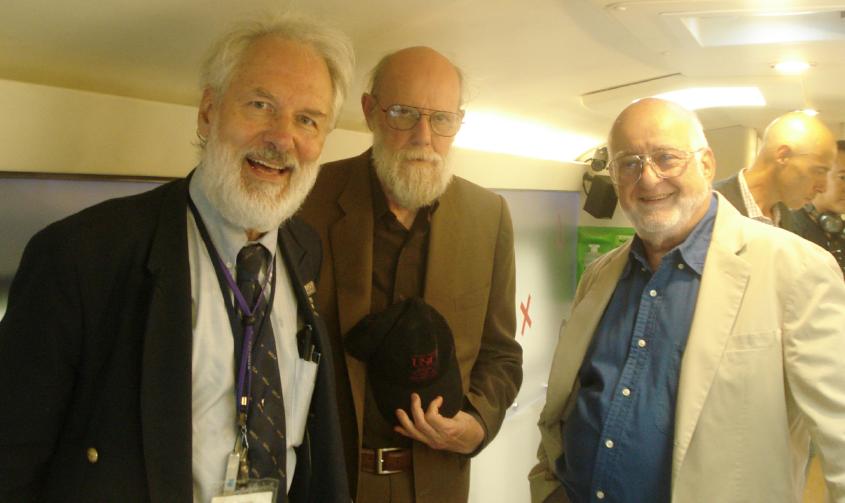
Monday, July 23, 2012; 12:30 PM PDT;
Children's Hospital; Los Angeles, CA. The Ion Bus is a mobile DNA sequencing platform
designed to travel around the country to visit healthy elderly and sequence their genes right on
the spot in less than 6 hours. The bus started in Florida and went to NYC before coming to Los
Angeles.
US$10 Million will be given to the first team to successfully sequence the whole genome of
100 healthy centenarian subjects within 30 days at a maximum cost of $1,000 per genome at an
error rate no greater than 1 per million base pairs and achieves best-in-class requirements for the
following prize categories: Accuracy, Completeness, and Haplotype Phasing.
Conceived by Dr. J. Craig Venter, the goal of the competition is to usher in a new era of
personalized medicine, revolutionizing genomic sequencing and challenging scientists to design
rapid, inexpensive, and accurate whole genome sequencing technologies.
Drs. Coles, Finch, and Kedes are shown during an interview for the press about the project.
Click on the bus to learn more of the details.
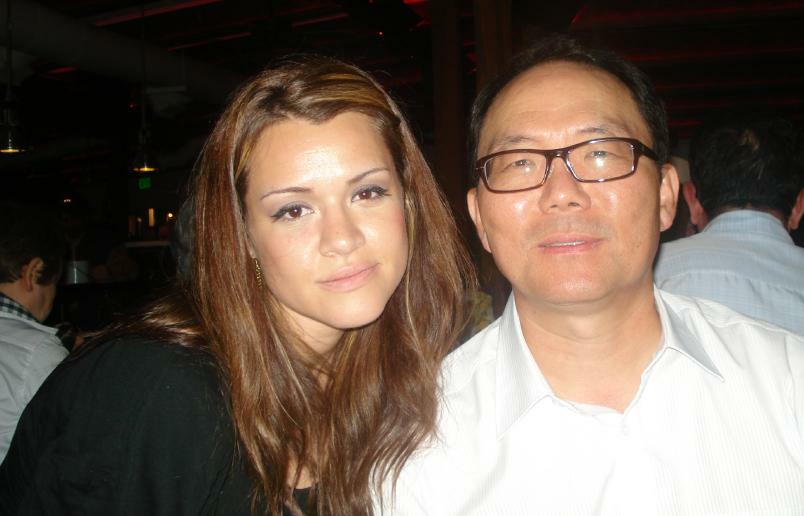
Sunday, May 27, 2012; 10:00 PM; Natalie S. Coles chats with Dr. Young Ghe Chung, a world
expert Veterinarian in animal cloning at the Gladstone Restaurant in Pacific Palisades, CA.
"Fulbright Scholar BBQ at UCLA"

Sunday, May
27, 2012; 2:30 PM; Dr. Stephen Coles attends an International Fulbright Scholars BBQ during
the Memorial Day Weekend.
"Mannkind Labs"
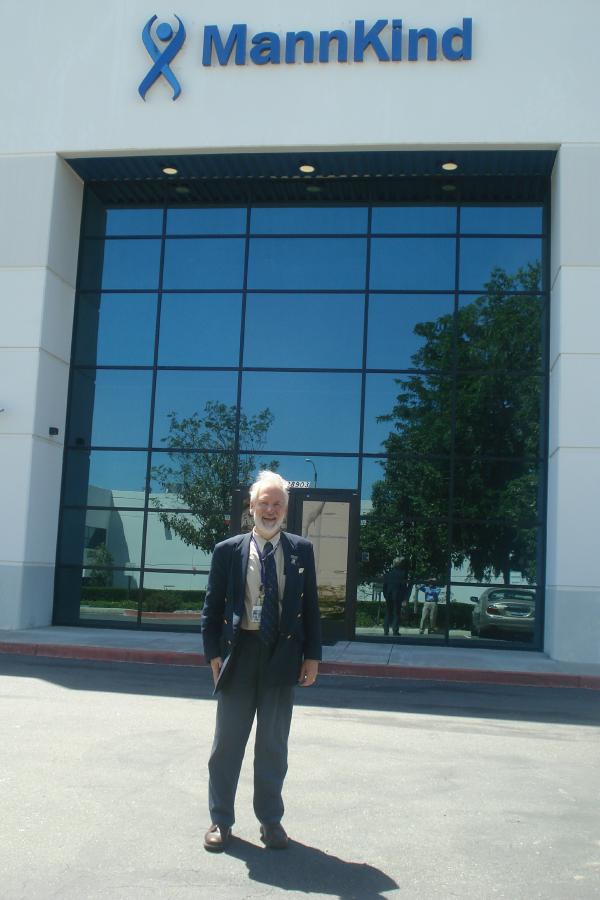
Wednesday,
May 23, 2012; 3:30 PM; Dr. Stephen Coles inspects the labs at the Alfred E. Mann Mannkind
Facilities.
"Lecture on Aging to UCLA Affiliates"
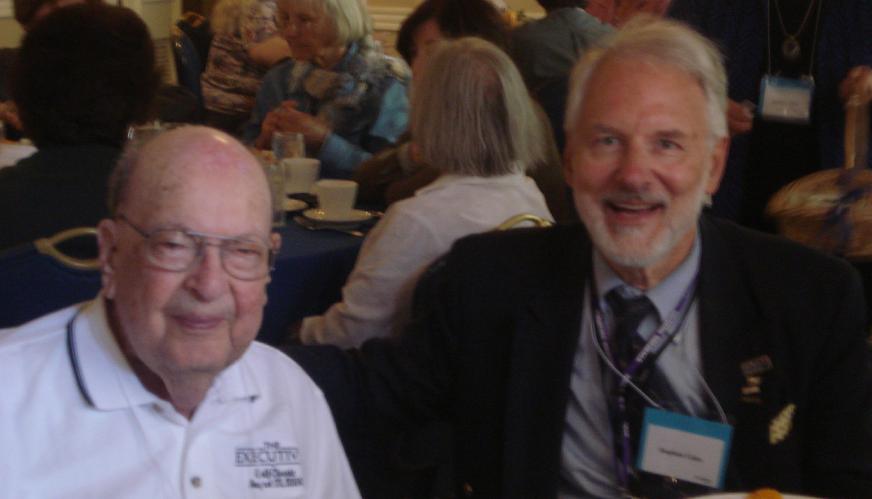
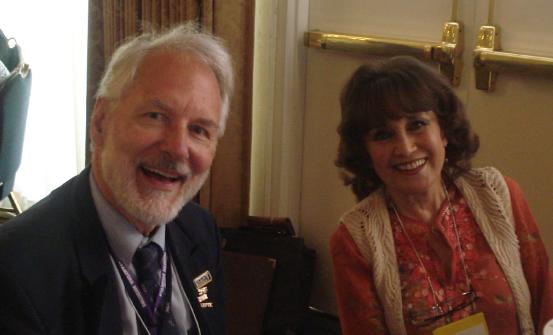
Thursday, May 17, 2012; 12:45 PM; Dr. L. Stephen Coles gave the Keynote Lecture to the
UCLA Affiliates luncheon on "The Secrets of the Oldest Old" to about 50 interested members.
Sherman in the photo above is 102 years old himself.
"Prof. Christof Koch on Consciousness"
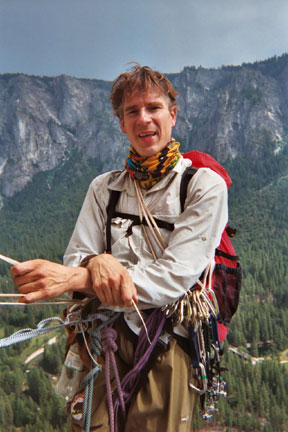
Sunday, May 13,
2012; 2:00 PM; CalTech; Pasadena, CA; Christof Koch, Lois and Victor Troendle Professor of
Cognitive and Behavioral Biology in the Biology Division, spoke to the Skeptics Society
regarding the topic of his new book, Consciousness: Confessions of a Romantic
Reductionist (MIT Press; Cambridge, MA; 2012). Click on his photo for more details.
"David Steinman for US Congress"
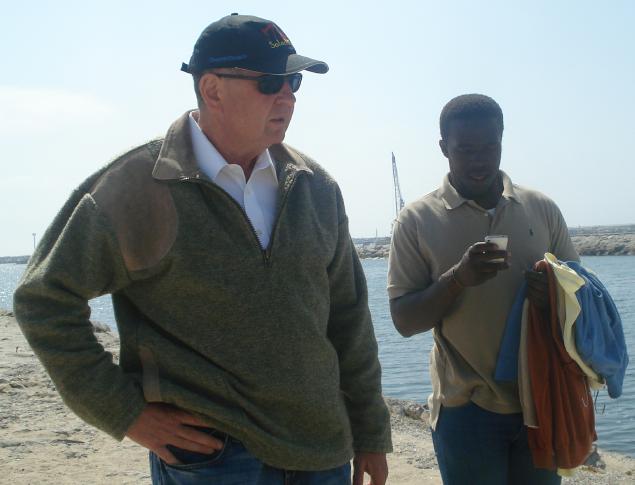
Wednesday, May 9, 2012; 4:30 PM PDT; Playa del Rey, CA; For a 30-second unlisted
YouTube Video Commercial made for David Steinman for Congress for the California Primary
Election that will take place on June 5th, click on the photo above. You may have to type in the
link manually as http://youtu.be/Mh7BuO1f_sI Dr. Coles appears briefly giving an
endorsement along with Ms. Alexandra Paul, one of the actresses from Baywatch (a
popular TV Series from the [1989 - 2001] time period).
"AMMG Lecture on a Supercentenarian with Severe
Dementia"
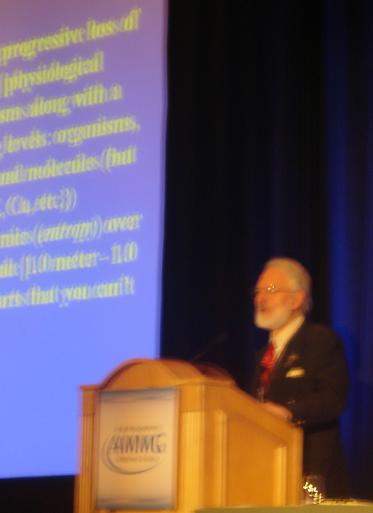
Sunday, May 6, 2012; 1:00 PM EDT; AMMG Conference Lecture at the Westin Diplomat Resort
and Spa; Hollywood, FL; Dr. Coles presented the autopsy data on the "Neuropathology of a
Supercentenarian with Severe Senile Dementia."
"Dr. Anthony S. Fauci Gives Medical Grand Rounds at
Stanford"

Wednesday, April 18, 2012; [8:00 -- 9:10] AM PDT; Department of Medicine, Stanford
University; Stanford, CA; Dr. Anthony Fauci, M.D. of NIH gave a superb one-hour review of
HIV/AIDS research at Grand Rounds: "Are We Close to a Cure?" Although a vaccine has not
yet arrived after 30 years of substantial effort, the value of male circumcision for risk reduction
was made conspicuously clear.
"Stephen Coles Gives Longevity Lecture at Stanford
Medical School
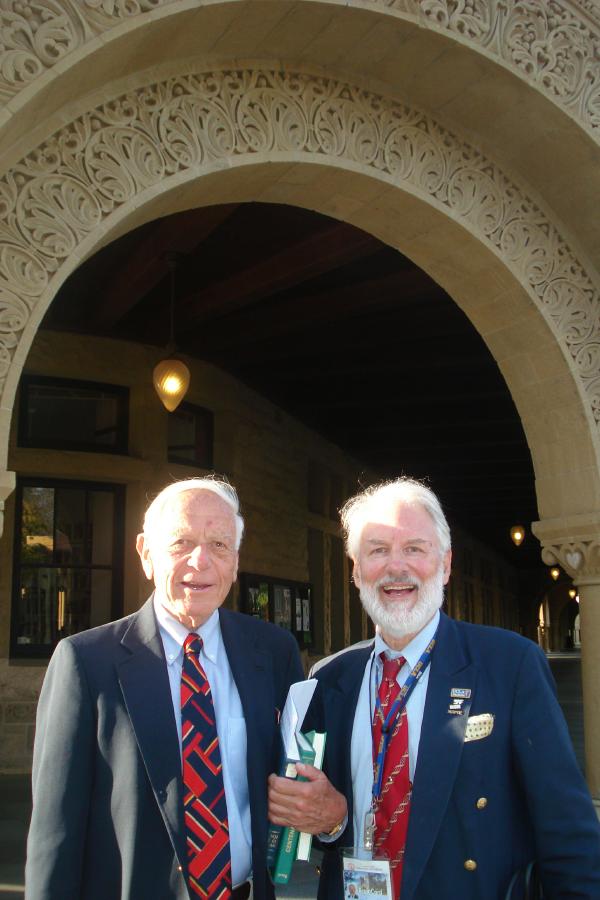
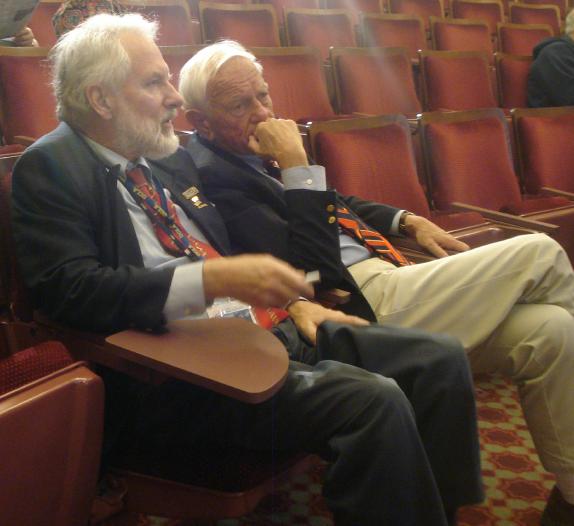
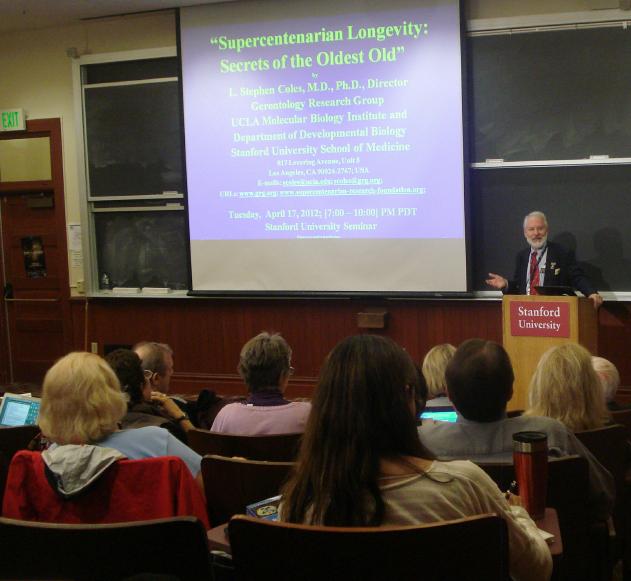
Tuesday, April 17, 2012; [7:00 - 9:00] PM PDT; "The Roadmap to 100: The Science of Living a
Long Life," a Ten-Week Course at Stanford University's Continuing Education (Bio-05) by
Walter M. Bortz, II, M.D.; Stephen and Natalie Coles presented a lecture entitled "Inside the
Lives of the World's Oldest People" containing over 100 PowerPoint slides to over 75
students.
We had an early diner with Stanford Immunologist, Prof. James Fries, M.D. with whom I've
worked for over 38 years (as well as his wife Sarah) before the start of our Lecture.
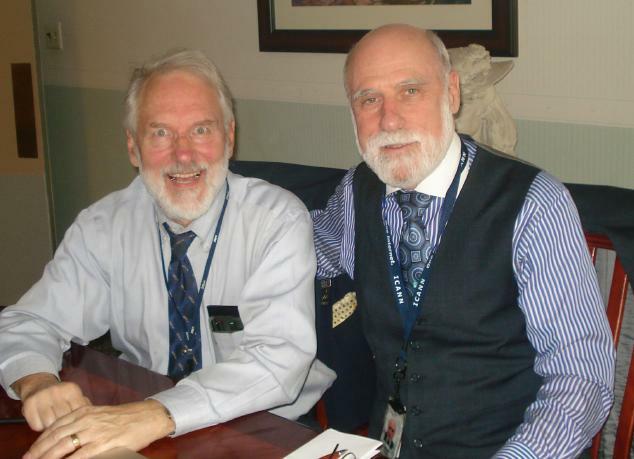
Saturday, March 31, 2012; 3:00 PM PDT; Tustin, CA; Steve Coles and Vint Cerf of Google in
Washington, D.C.
"UCLA IMED Seminar on hESC's for the Eye"

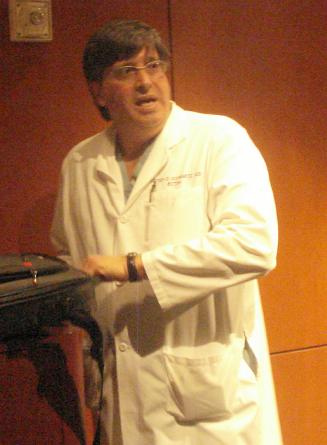
February 29, 2012; Noon; Drs. Robert Lanza of ACT and Steven Schwartz of UCLA
Ophthalmology jointly presented the first FDA-approved clinical trial on diseases of the eye
using human embryonic stem cells at the IMED Seminar. Click on the first photo for more
details from The Wall Street Journal.
"The Connectome"
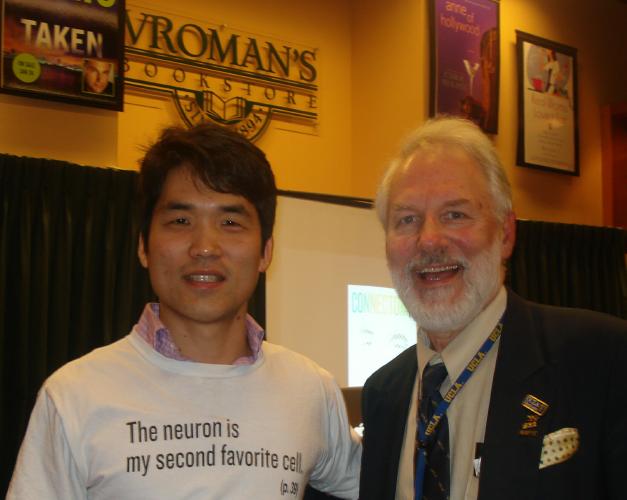
February 15,
2012; On a national book tour for his new book The Connectome, Prof. Sebastian Seung
made a one-hour presentation at Vroman's Books in Pasadena, CA.
"Gordon Research Conference on the Biology of Aging
in Ventura, CA"
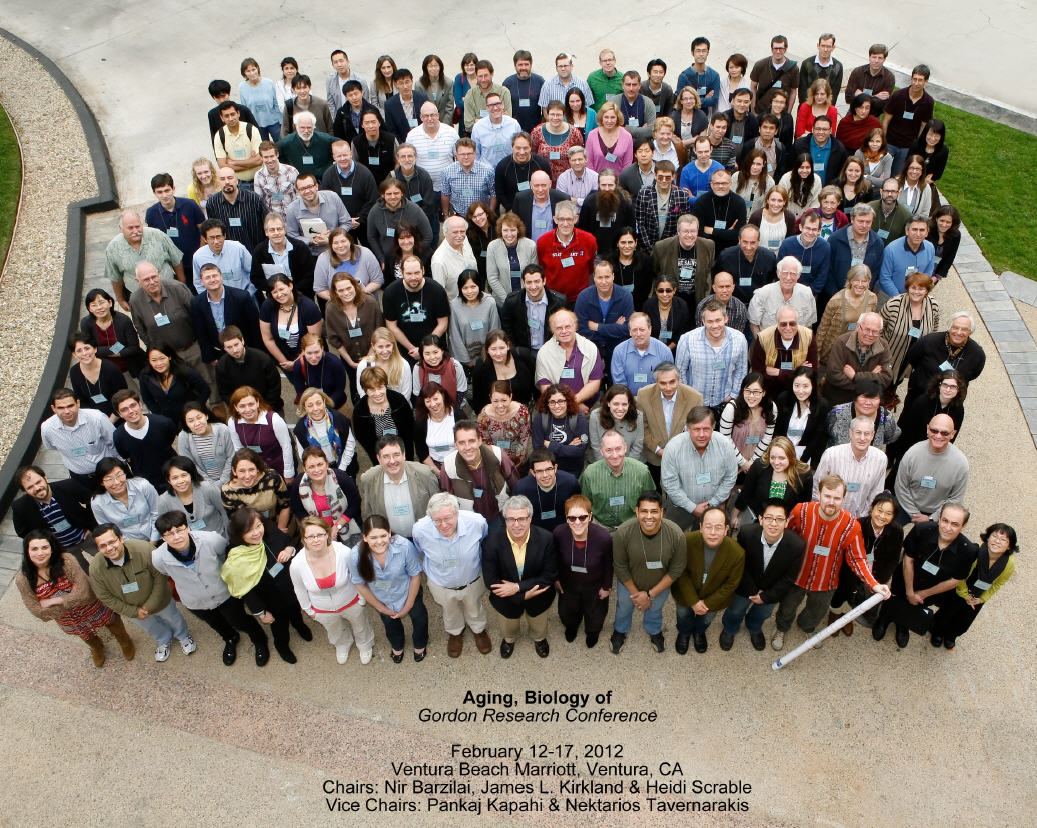
February 14, 2012; The Gordon Research Conference on the Biology of Aging was held in
Ventura, CA from February 12-17, 2012. Attendees included George Martin, M.D., Seattle,
WA; Aubrey de Grey, Ph.D., Cambridge, UK; Hinco Gierman, Ph.D., Stanford University; Tom
Perls, M.D., Boston University; Cynthia Kenyon, Ph.D., UCSF; Richard Miller, M.D., Ph.D.,
University of Michigan; Steven Austad, Ph.D., University of Texas; Elliot Bergman, Ph.D.,
Valdosta, GA; Nir Barzilai, M.D., Einstein, New York City; Jan Vijig, Ph.D., Einstein; New
York City; Judy Campisi, Ph.D., Buck Institute; Novato, CA; Brad Wilcox, M.D., Honolulu, HI;
Tom Kirkwood, Ph.D., UK; Nicholas Schork, Ph.D., UCSD; Gordon Lithgow, Ph.D., Buck
Institute, Novato, CA; Rita Effros, Ph.D., UCLA; Stephen Coles, M.D., Ph.D., UCLA; and
Valter Longo, Ph.D., USC.
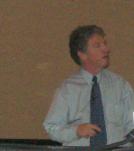
Tom Perls, M.D. Boston University
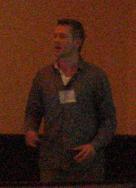
Hinco Gierman, Ph.D., Stanford University
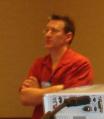
Brad Wilcox, M.D.; Honolulu, HI
"Defeating Aging with Regenerative Medicine"
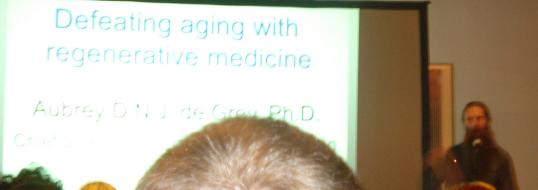
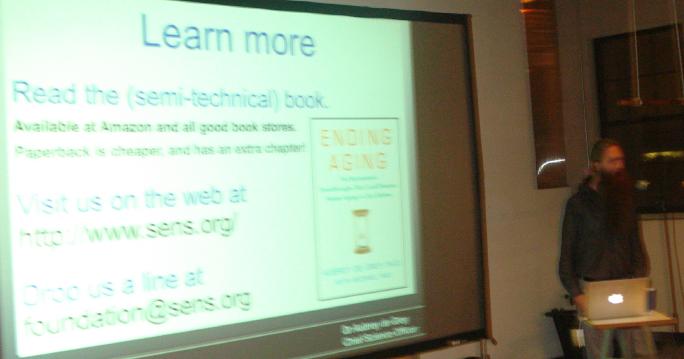
February 12, 2012;
7:00 PM; Dr. Aubrey de Grey, Chief Science Office of SENS, gave a one- hour lecture to 60
attendees of the Local SENS Chapter Meeting at the Brewery in downtown Los Angeles near the
USC Keck School of Medicine.
"Eigth Annual Stem Cells Symposium: Stem Cells and
Cancer"


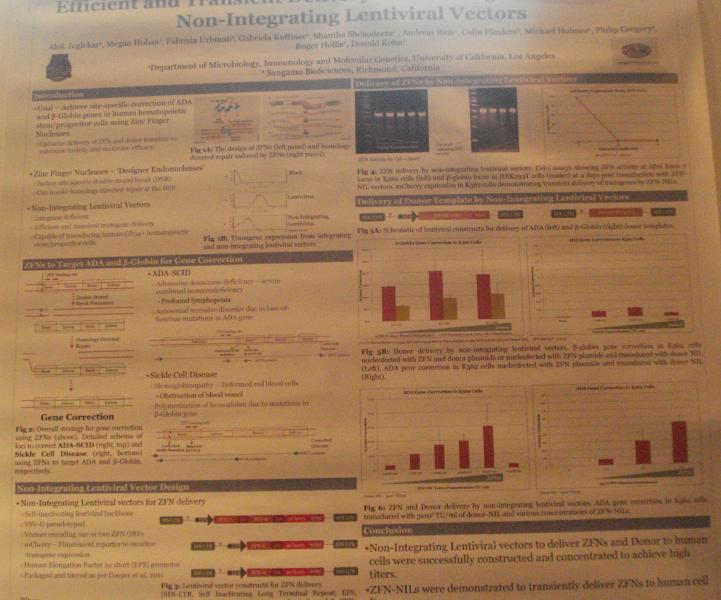
Friday, February 10, 2012; [8:00 AM - 4:30 PM]. Dr. Jonathan Thomas, Ph.D., J.D., the current
Chairman of CIRM, started the Eight Annual UCLA Stem Cells Symposium: Stem Cells and
Cancer with a discussion of the prospects for a new round of funding from the State of
California when current funding is expected to be completed in about five years. Recall that
under Robert Klein, Prop. 71 [2004] provided $3 billion over a ten-year period of which $1.3B
has been spent with $[5-6] million committed in RFA's for next year. CIRM has provided
universities with a significant amount of infrastructure and buildings for its private and public
universities as well as training grants for students, Residents, and Post-Doctoral Fellows.
Collaboration with researchers around the world has been a hallmark of CIRM's approach.
Collaboration with California-based industry has also been important to translate basic resaerch
into commercial products. But in order for the citizens of California to provide a similar amount
of support in the future, CIRM will have to demonstrate value for this investment in the form of
cures for specific diseases that will impact health-care economics within our state. One such
disease is Sickle Cell Disease (SSD), which affects more than 80,000 persons. The Mendelian
genetic basis for SS Anemia has been known for decades (a point mutation in in the Beta
Hemoglobin gene {G=C --> A=T} results in a {Glu -- > Val} amino acid substitution in the final
protein [the mutation is maintained in the general population, since it confers a modest resistance
to malaria] resulting in the formation of rouleaux [a stacking of hemoglobin tetramers
like a roll of coins due to self-stickiness] ultimataly deforming membranes of Red Blood Cells
giving them a sickle shape under the microscope and blocking them from passing easily
(deformably) through narrow capillaries, thereby chocking off blood flow to the distal
(downstream) veins resulting in significant pain in the joints [due to tissue anoxia] for those
afflicted with this condition. Little can be done today short of a bone-marrow transplant from a
sibling donor to alleviate this disease, which disproportionally afflicts Black Americans. In my
opinion, curing the root-cause of SSD through CIRM funding, could be the "Silver Bullet" that
would be needed to convince the public to renew a next round of funding. The cure is on the
drawing boards in the form of genetic engineering in which Zinc Fingers (six nucelotides on each
side of the corrected sequence) would be used to do a snip-out and back-in a genetic correction to
the bad gene in the native chromosome in which the defective gene resides. The zinc-finger
technology is being developed by a company in Northern California (Sangamo
Biosciences of Richmond, CA) and has been tested using a viral vector in animal models.
(See the poster above that will be published soon.) A Phase-1, FDA-approved human clinical
trial is planned to begin in about two years with autologous bone-marrow transplants (obviating
the concern about using anti-rejection drugs), hopefully in time to influence public opinion when
it is most needed. The beauty of this approach is that the technology is generic, since it could be
applied to a wide variety of genetic diseases and not just SSD.
"Systems Biology and the Future of Medicine"
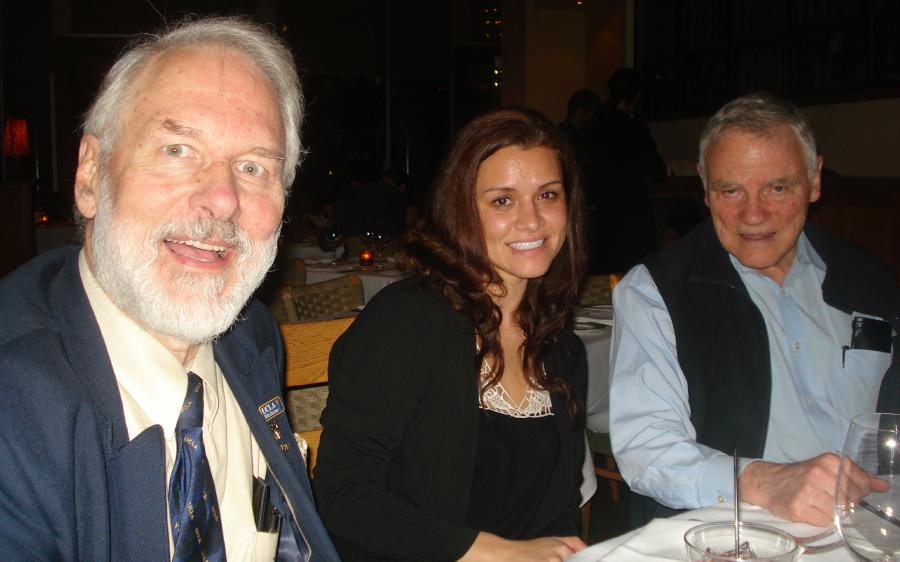
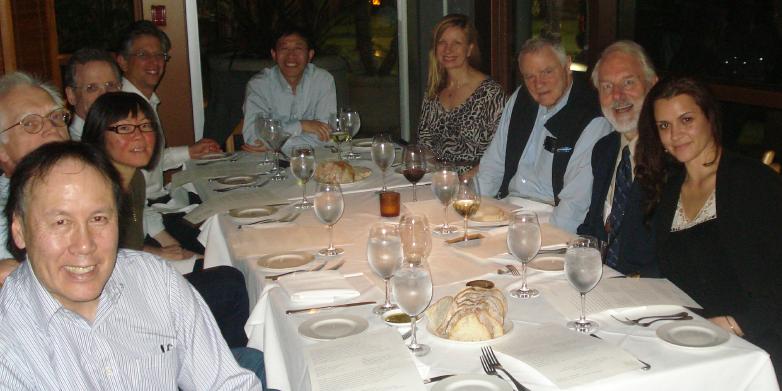
Wednesday, February 8, 2012; 12:00 Noon. Prof. Leroy Hood, M.D., Ph.D., Director of the
Systems Biology Institute of Seattle, WA gave a talk to the UCLA IMED Seminar to a full
audience on the topic of "Systems Biology, Transforming Technologies, and the Emergence of
Proactive 'P4' Medicine." BTW, P4 stands for "Predictive, Preventive, Personalized,
and Participatory." Genomic biology is digital; however, proteomics is still
analog, so it's slower going. The cost of complete sequencing will go from ~$4,000 today to
under $1,000 at the end of next year. Furthermore, the cost is forecast to go down to $200 in five
years. So, after that time, all newborns will have their sequences routinely done at birth; the
sequence will be anonymized and placed in a public data base for biostatistical analysis. Indeed,
doctors may come to request a genomic/epigenetic profile to be done every year on all patients
over age 60 on an annual basis, as part of their routine screening. Click on the first photo above
for a direct link to the P4 Medical Institute and a short peek
into the future of medicine as it will be practiced in five years.
"Understanding our Genes: Steps Toward Personalized
Medicine"


Tuesday, January 17, 2012; Noon; San Diego, CA; Drs. J. Craig Venter, Ph.D. and Catriona
Jamieson, M.D., Ph.D. gave a joint keynote address to the CIRM Board of Directors at their
all-day business meeting. Click on the photo of Craig Venter and Alan Trounson, President of
CIRM, for a full video of the presentation.
"A Universe from Nothing"
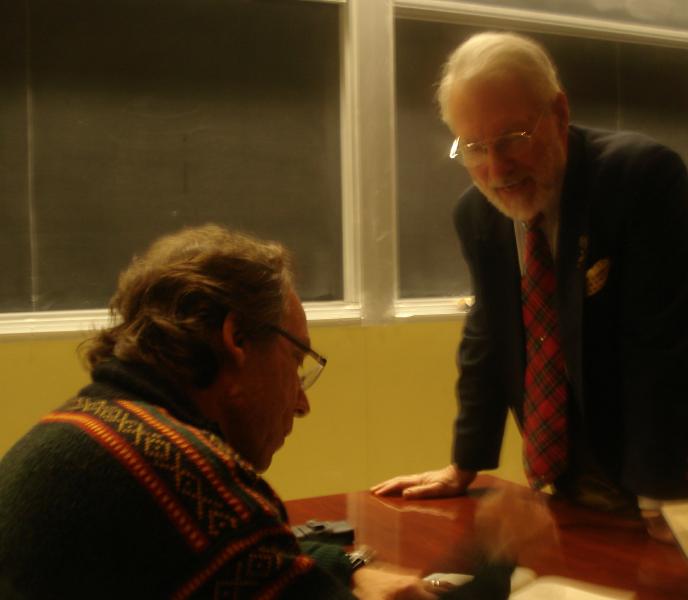

Sunday, January 15,
2012; 2:00 PM; CalTech, Pasadena, CA; Lawrence Krauss, Ph.D., a theoretical physicist and
cosmologist from Arizona State University in Tempe, AZ, spoke to the Skeptics
Society on the topic of "Why There Is Something Rather Than Nothing." After his talk, he
autographed copies of his new book.
Where did the universe come from? What was there before? Why was there something
rather than nothing? Such questions have been at the heart of religious and philosophical debates
about the existence of God, but in recent years science has been closing in on the answers.
Krauss takes us back to the beginning of the beginning, presenting the most recent evidence for
how our universe evolved and how it's going to end - - not with a bang but with a whimper. As
Richard Dawkins writes "This could potentially be the most important scientific book with
implications for supernaturalism since Darwin."
In the Audience was a famous magician, The Amazing James Randi, 84, a long-time
member of two different skeptics societies. Click on his photo above for a link to his Foundation
and the unclaimed US$1,000,000 prize for the first person to demonstrate a supernatural
capability that withstands the scrutiny of scientific skeptics.
Click for News Items from 2011.
























































